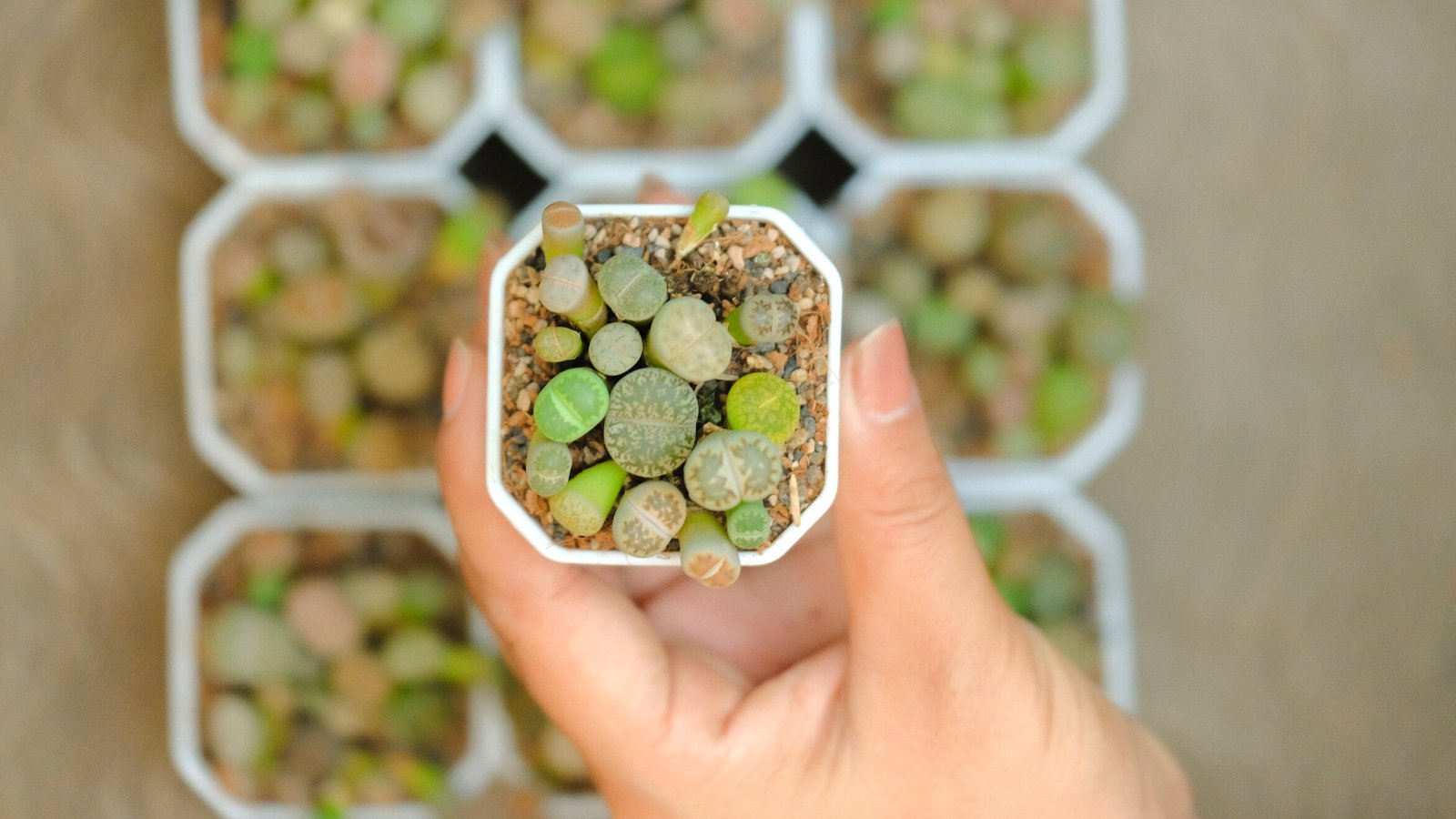Rising crops from seed has many advantages. You’ve gotten higher management over the atmosphere, it saves cash, and it’s extra rewarding to nurse a plant from seed than it’s to purchase one from the nursery. However can succulent lovers take part on the motion?
Like every plant that flowers, it’s attainable to develop succulents from seeds. In truth, it’s ultimate for avid succulent growers searching for rarer species which can be laborious to search out in nurseries. It might take just a little longer for the crops to develop, particularly in the event you’re used to sowing issues like greens and herbs, which pop up in just a few weeks. However the reward is effectively well worth the wait.
The record of succulents you possibly can develop from seed is in depth, however these are the 15 I like to recommend for inexperienced persons which can be comparatively simple to search out or develop effectively from seed.
Cacti
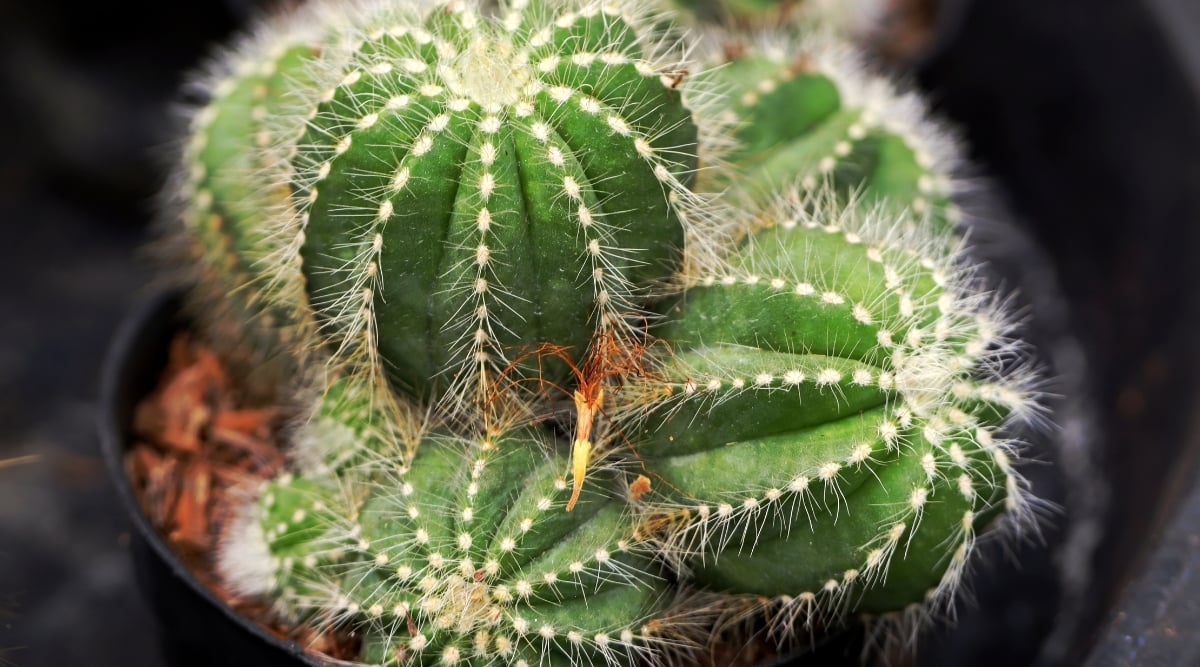

The primary entry is considerably complicated, as cacti are normally thought of a separate group of crops. Nevertheless, their progress habits imply they are often grouped below succulents; it simply doesn’t work the opposite means round. All cacti are succulents, however not all succulents are cacti.
These spiked beauties are simple to start out as seeds, though you will have just a little persistence when you await them to germinate. It takes a couple of 12 months from sowing to succeed in one inch in peak. For some added selection, select a seed combine with just a few totally different species.
Lithops
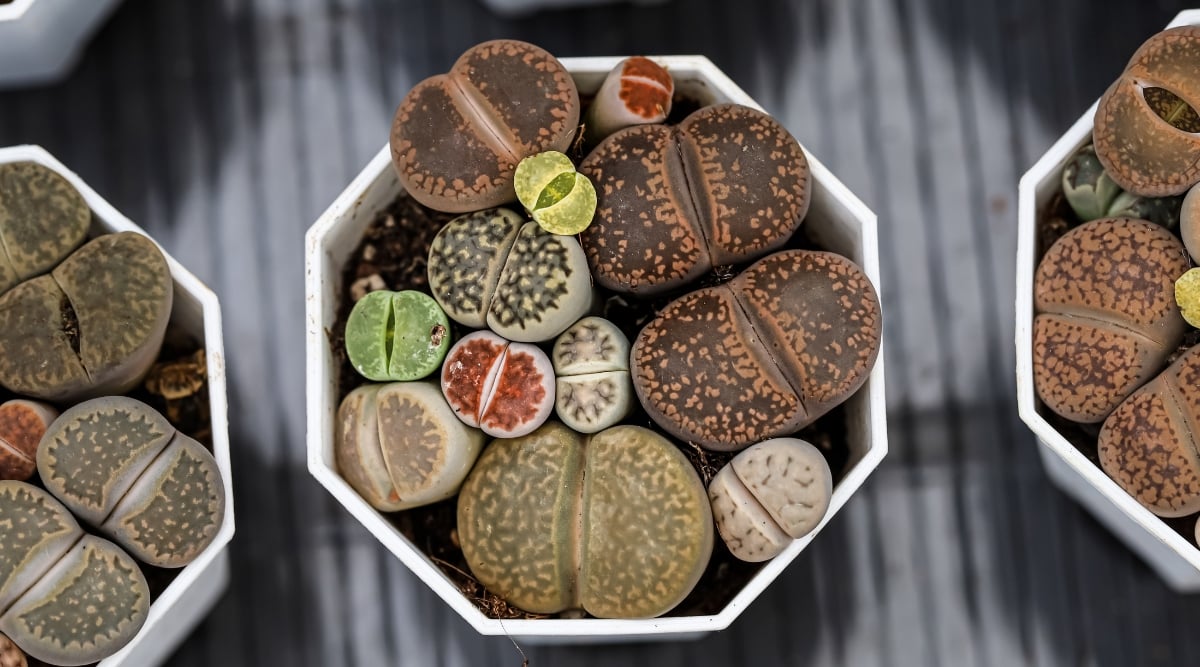

Lithops are also called residing stones or stone crops, and it’s simple to see why. The pair of fused leaves stays largely underground, with solely a small part peeking above the soil line. With no re-examination, you possibly can simply mistake them for pebbles. That is their protection in opposition to predators within the wild.
It’s really best to propagate lithops with seeds. Merely sow the seeds in a layer over succulent potting soil and flippantly cowl in vermiculite. Buying seeds permits you higher selection over selection, fairly than limiting you to what’s obtainable at your native nursery.
Conophytum
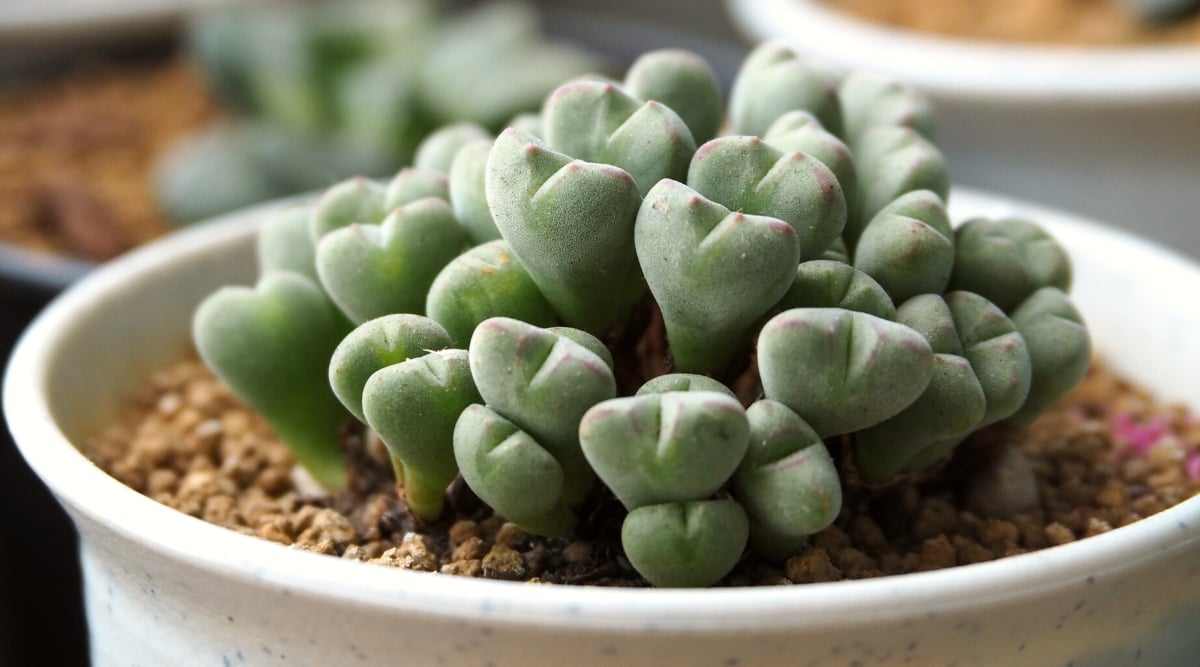

In case you’ve fallen in love with lithops, you’ll most likely love the cute and much much less widespread genus Conophytum. Originating from the identical harsh Southern African environments, conophytum crops additionally characteristic fused leaf pairs and virtually no stem, usually popping up between crevices in rocks.
The seeds of this distinctive plant could also be just a little tougher to search out than different succulents on this record. Test with specialised growers and store on-line to search out the proper species.
Echeveria
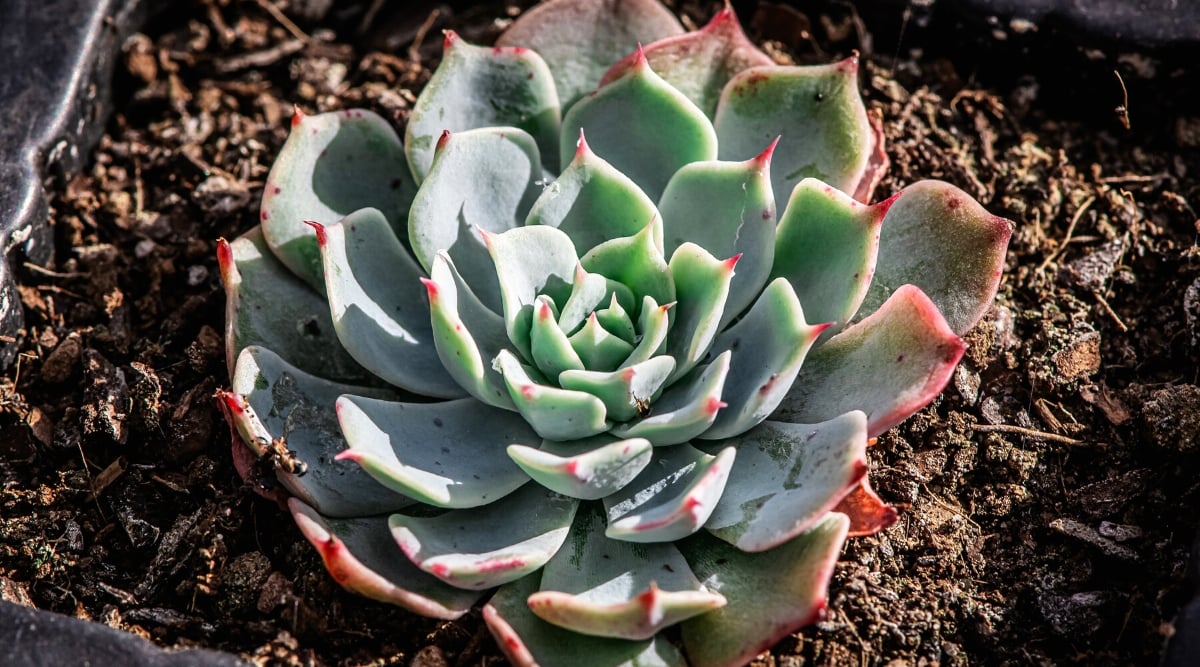

After I consider succulents, Echeveria is the primary genus that pops into my head. Their geometric varieties, distinctive colours, and ease of care embody every thing there’s to like about rising succulents.
Echeveria are simple to search out but additionally enjoyable to develop from seeds. There may be extra selection in species, significantly in areas the place succulents usually are not as broadly grown. In case you’re trying to cowl a big space in your backyard, sowing seeds is far cheaper and faster than ready for mature crops to unfold.
Crassula
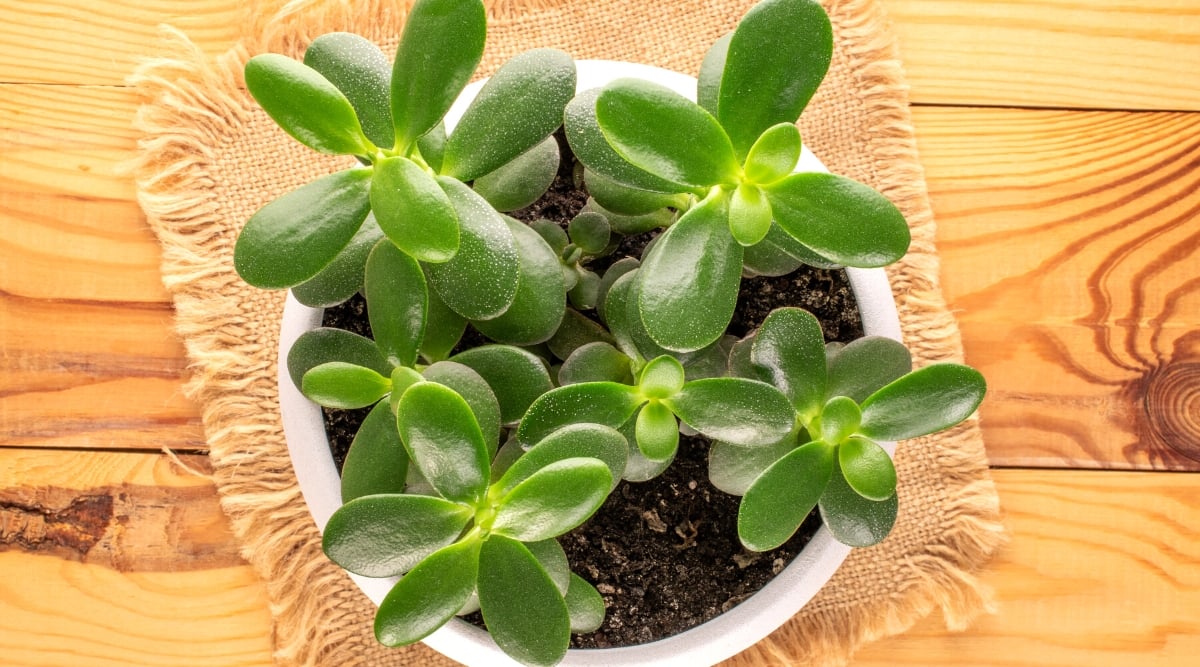

Crassula ovata, generally referred to as jade plant, is a shrub native to South Africa. Due to its tolerance for decrease gentle in comparison with different species, it’s grow to be a well-liked houseplant and some of the sought-after succulents for inexperienced persons.
For houseplant lovers who don’t get to sow seeds usually, seeding Crassula ovata is a good gardening experiment. However you aren’t restricted to this species. A number of Crassula seeds can be found on-line, increasing your choices past the standard jade plant.
Aloe
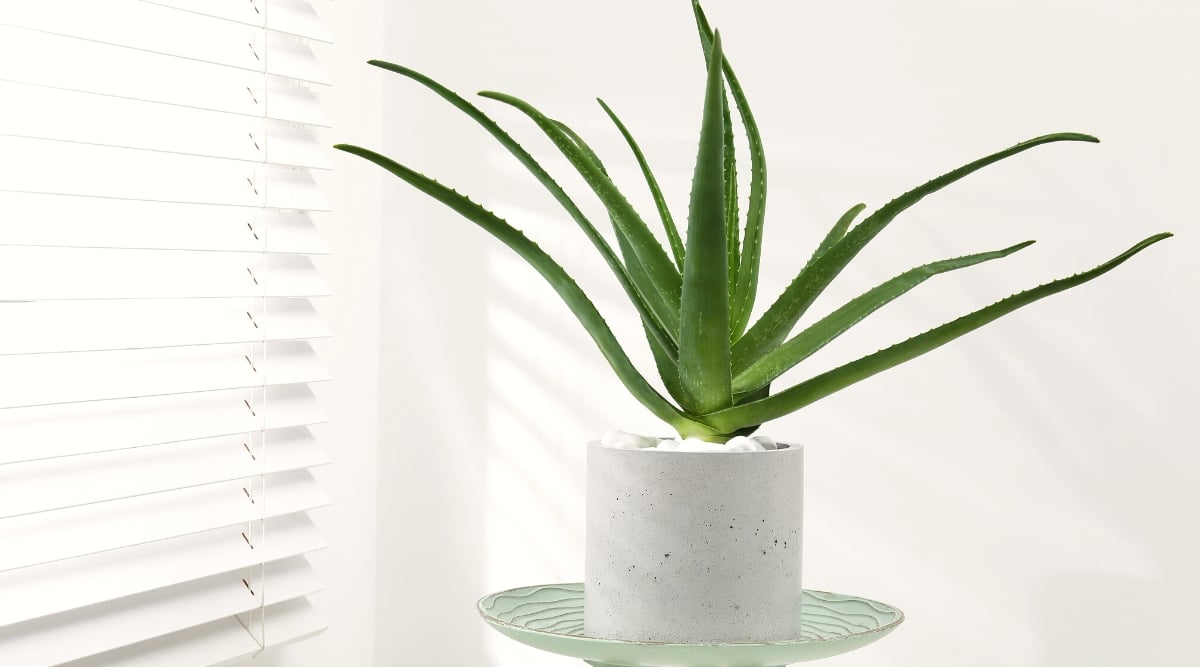

The title aloe is sort of synonymous with the species Aloe vera, identified for its medicinal properties and used usually in magnificence merchandise. Nevertheless, there’s way more to the aloe genus than this one plant. There are greater than 600 species to select from, certainly one of which is definitely named after certainly one of my ancestors (Aloe greatheadii).
In case you’re rising aloe from seed, strive a species you might not have seen or grown earlier than. They germinate inside just a few weeks, however bigger species will take some time to succeed in their full measurement.
Sedum
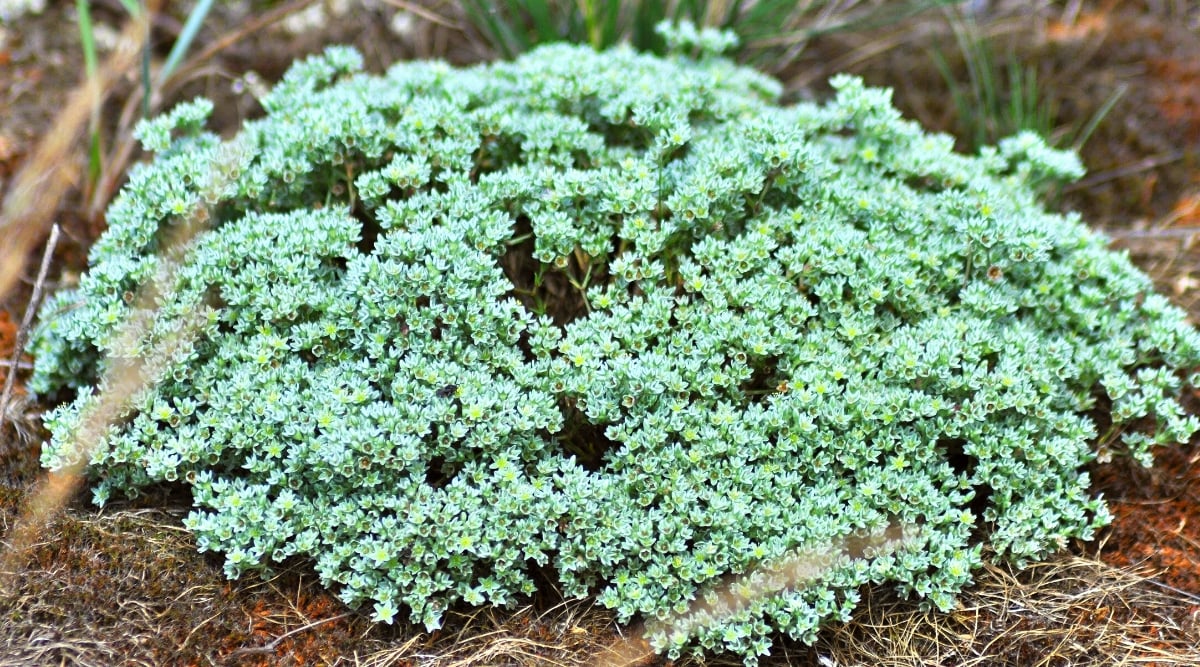

Sedums are also called stonecrops because of the rocky environments they develop finest in. They make ultimate groundcovers for sunny areas with sandy soil the place different crops could wrestle to develop.
To determine sedum as a groundcover, it’s best to start out from seed. Select the identical species for uniformity within the backyard, or decide a pack of combined species to deliver some selection to open and uncovered areas.
Haworthia
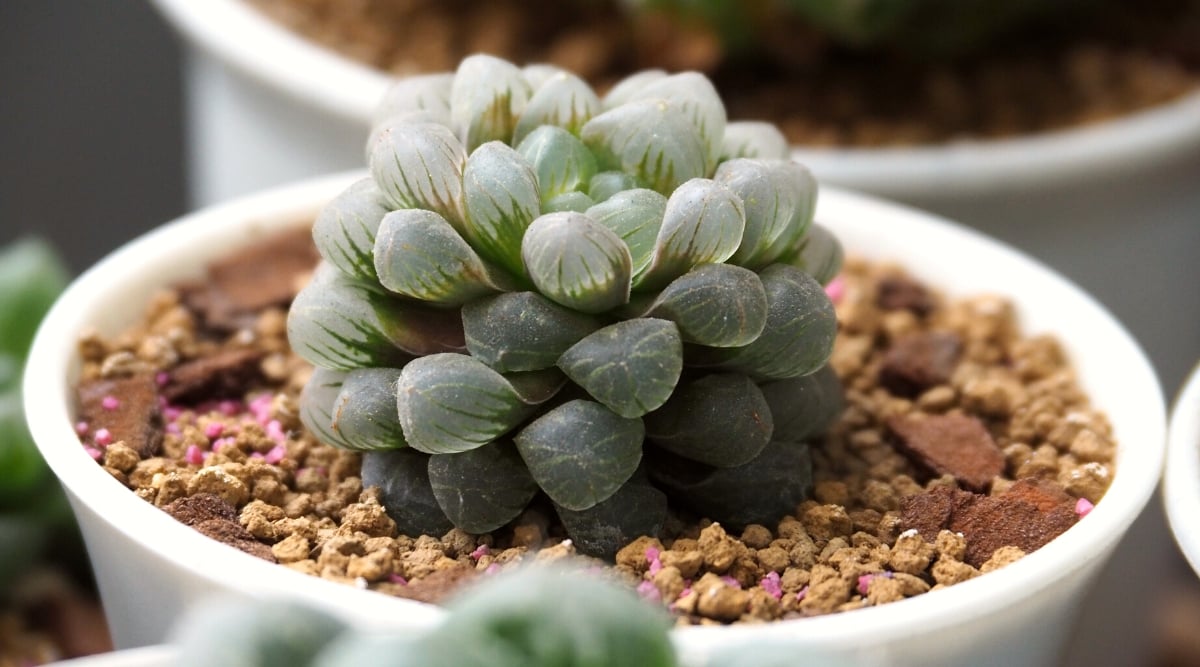

In case you just like the look of Aloes however don’t have area for a bigger plant, strive Haworthia as an alternative. These crops have an analogous form and construction to Aloes however are a fraction of the scale.
Some Haworthias have a extra distinctive look than others, with inflated leaves or unusual progress patterns. If you would like one thing just a little extra out-of-the-box, search for species like H. truncata, H. splendens, or H. cooperi.
Agave
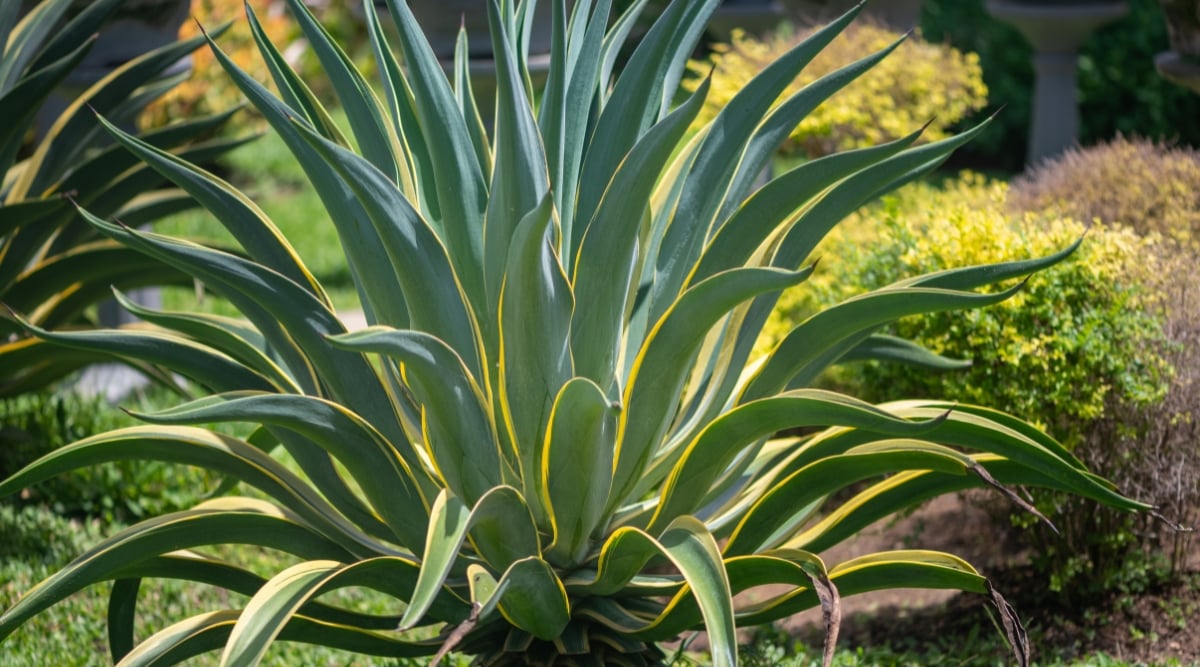

Stately agaves are sometimes a lot bigger than the compact succulents many are used to rising. They’re sometimes planted in beds fairly than containers. These structural crops have thick leaves and harsh spiked edges, with Agave attenuata because the smooth-leaved exception.
In case you’re excited about distilling your personal tequila, you’ll need to search for Agave tequilana seeds. Be sure you get a license to take action first, as distilling within the US with out one is a felony. The crops have a beautiful blue hue and spiked form that stands out in any backyard.
Aeonium
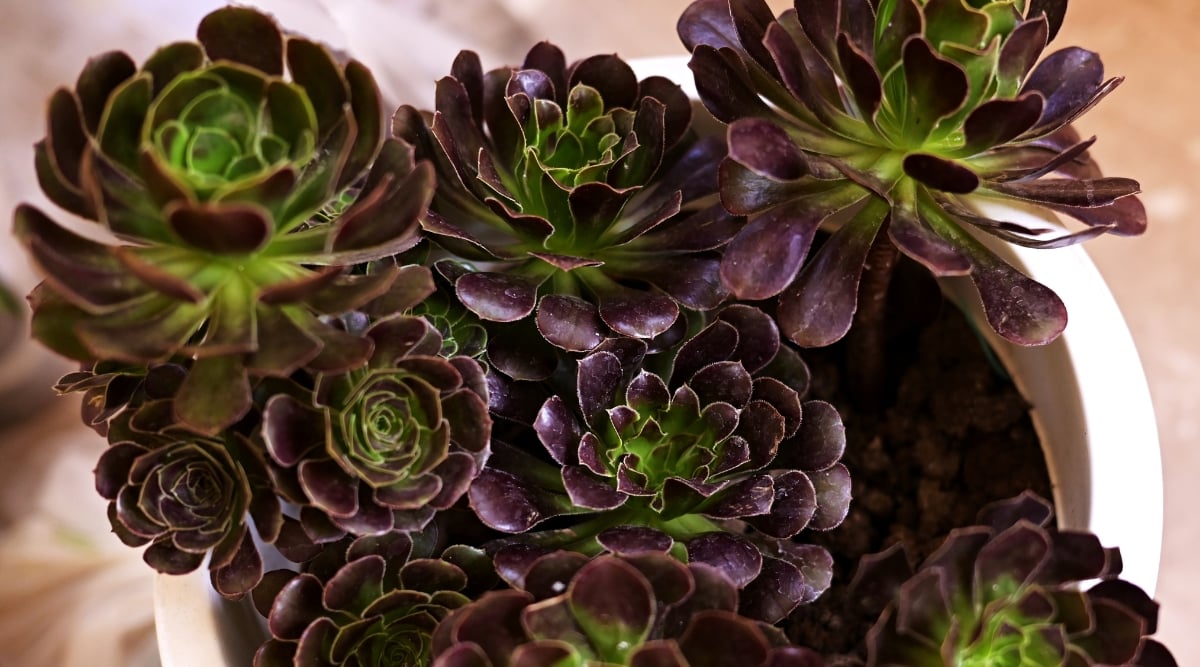

Aeoniums are nice characteristic crops for containers, not only for their peak however their spectacular colours. They type rosettes like different succulents, however the leaves are extra rounded on the ends to melt their structural form.
To suit the goth backyard pattern, strive rising ‘Zwartkop’ for intriguing purple-black leaves. You’ll additionally discover Aeonium species with patterned inexperienced, crimson, and purple leaves. Sow the seeds on the floor of an ordinary succulent soil combine and supply vibrant daylight.
Pachypodium
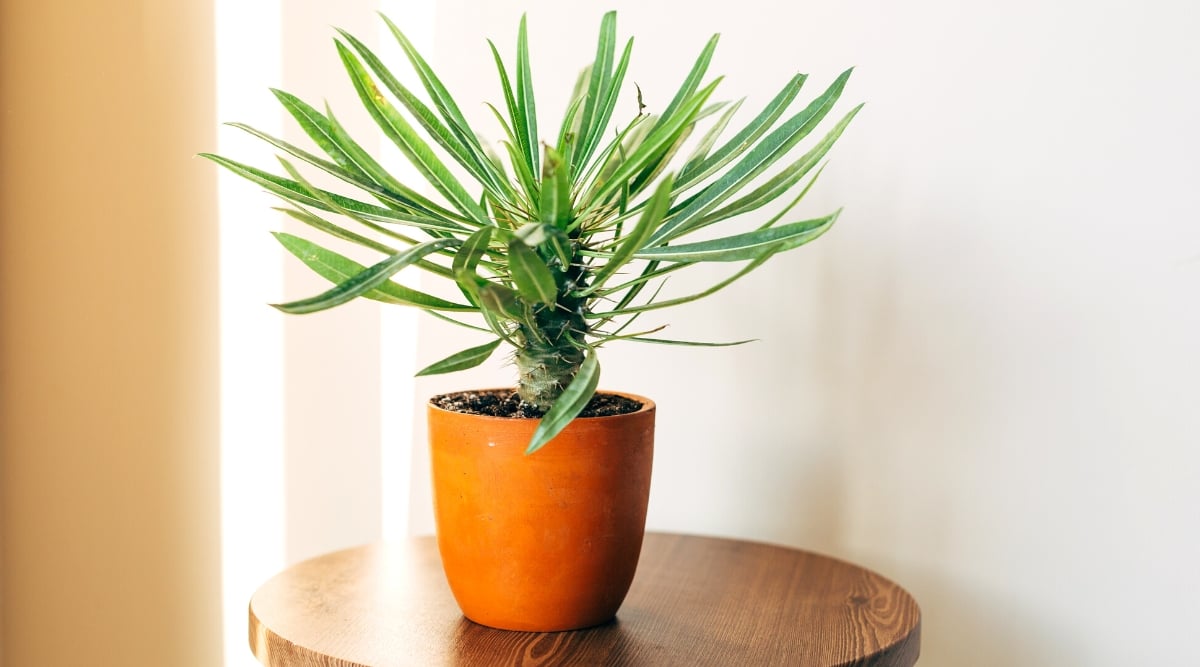

Pachypodium is certainly one of my favourite succulent genera, purely for the cute, bloated stems of many species. A number of the crops look virtually alien, with huge spiked bases and just some tiny leaves protruding. The smaller species are nice for containers and are usually skilled like bonsai timber.
Sowing seeds provides you the chance to decide on rarer species which may be robust to search out. This additionally permits them to adapt to your backyard atmosphere from the get-go. They’re sluggish growers however definitely well worth the wait.
Adenium
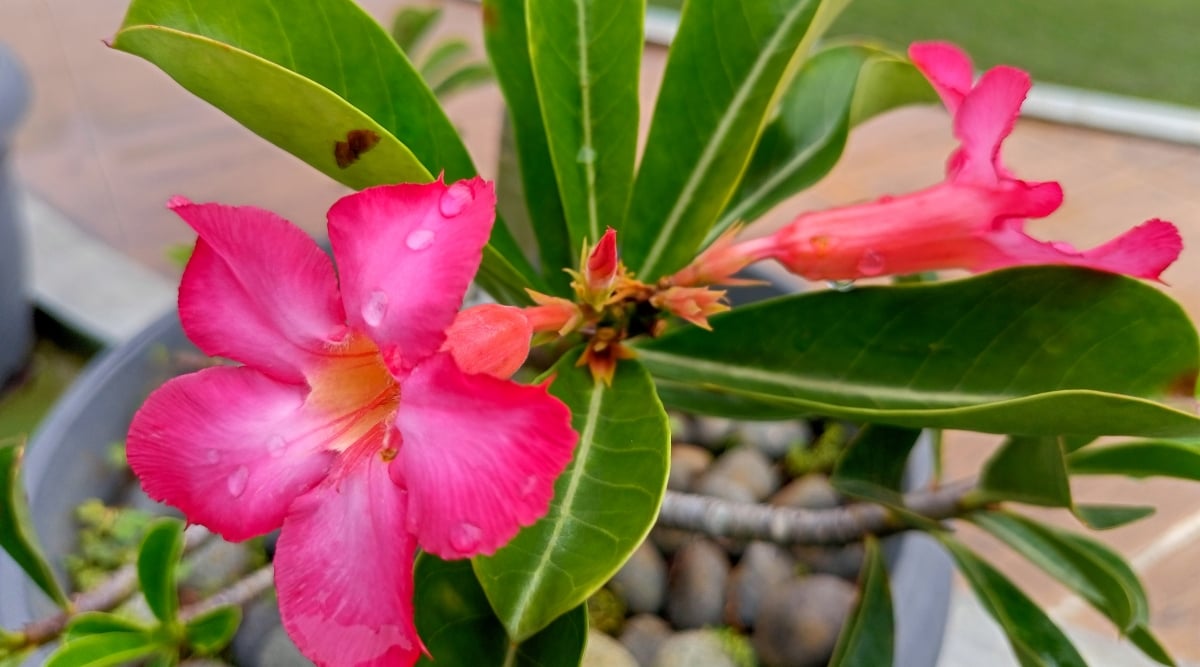

Adenium species have an analogous form to Pachypodiums. Nevertheless, the standout characteristic of those crops is the flowers, generally referred to as desert roses. In the appropriate environments, the ends of the branches will probably be coated in vibrant blooms in a variety of colours.
Adeniums are massive crops that sometimes develop a number of toes tall. Nevertheless, if they’re stored indoors and confined to a container, these sluggish growers will stay compact. Sow them indoors, giving them loads of daylight to permit them to adapt to your house atmosphere.
Kalanchoe
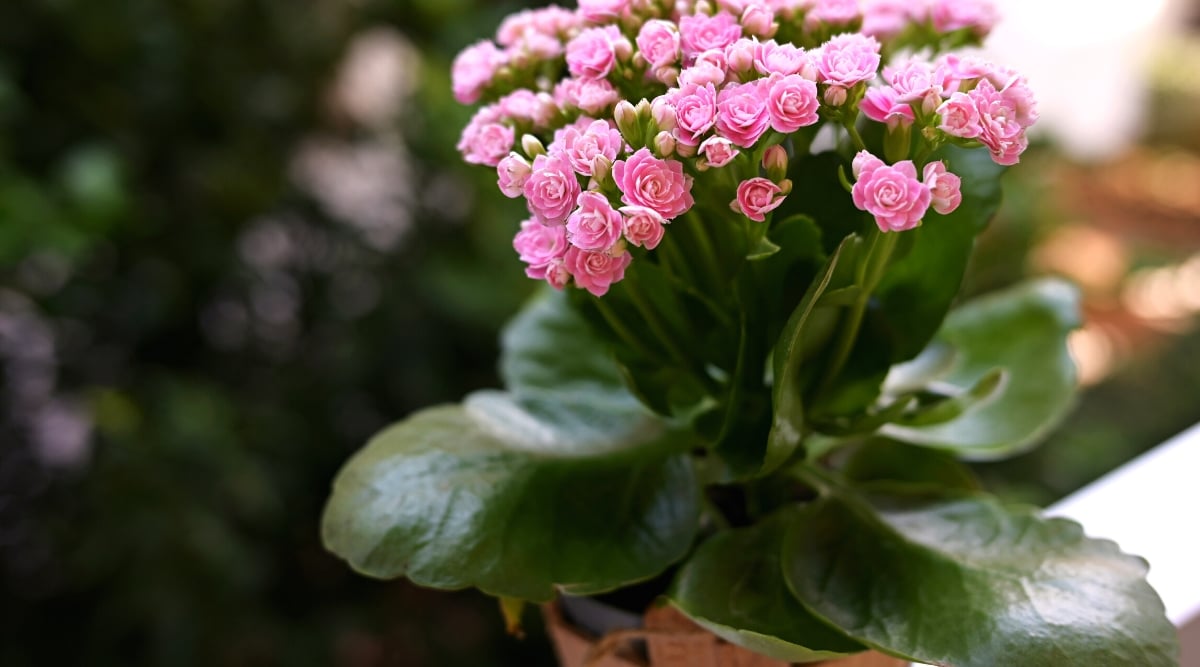

Typically stored as houseplants, Kalanchoe are ultimate succulents for inexperienced persons. They’re resilient crops that develop effectively in a variety of situations (together with oblique gentle), making them one of many simpler succulents to develop indoors.
Kalanchoe seeds are tremendous tiny, so watch out when dealing with them. Sow flippantly instantly on high of your combine, and don’t cowl. The seeds want gentle to germinate efficiently. Kalanchoe blossfeldiana is among the most generally grown for its flowers, however different cute species like Kalanchoe thyrsiflora additionally develop effectively from seed.
Sempervivum
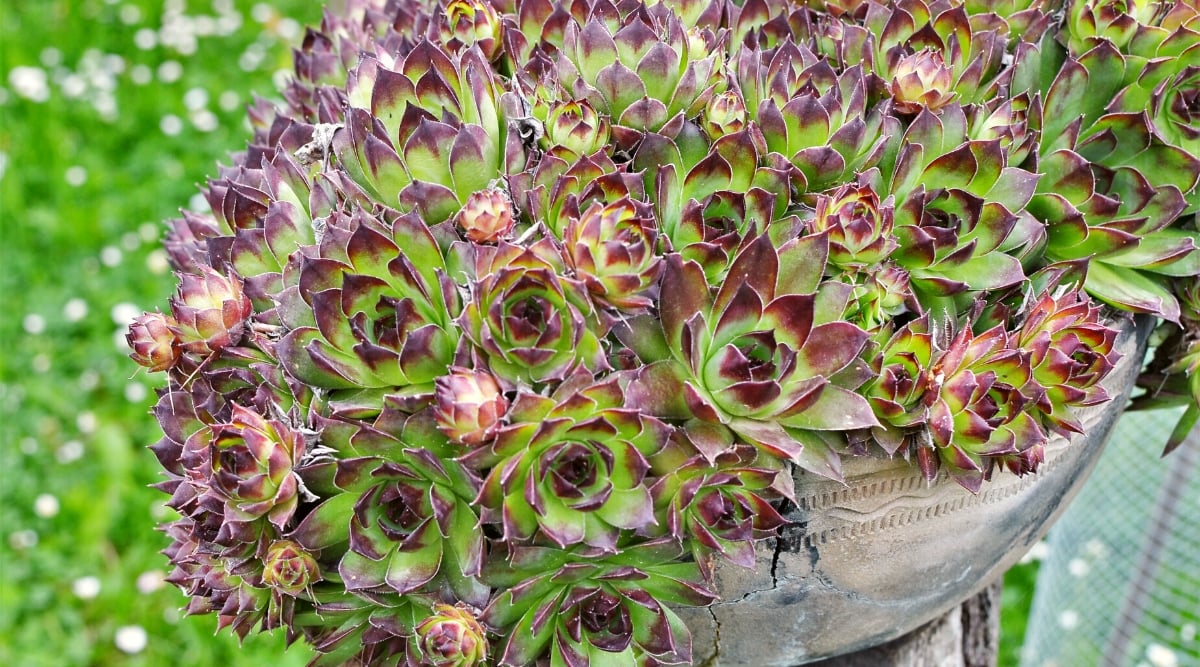

These crops have an extended record of entertaining widespread names. Hens and chicks is one you’ll probably see most frequently, named after the best way they propagate and unfold. They’re additionally referred to as houseleeks or (reassuringly for inexperienced persons) live-forever crops.
You’ll find Sempervivum seeds for specific sorts, however combined packets are way more thrilling, for my part. It provides some thriller to the method and pleasure when the totally different varieties and colours begin to take form.
Fenestraria
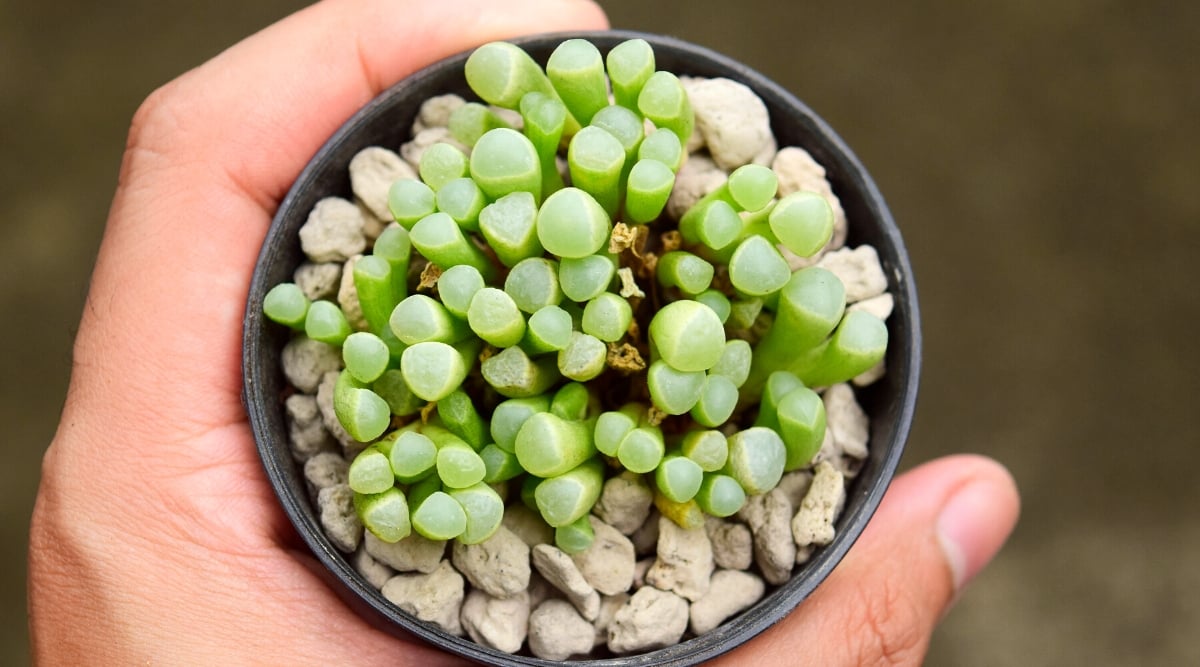

Fenestraria rhopalophylla is among the most lovable succulents you possibly can develop, with an equally cute title – child toes. The clump-forming succulent produces teams of tubular leaves with barely translucent tops to permit gentle to penetrate by means of.
Child toes are usually stored as houseplants however want loads of solar to maintain them blissful. After just a few years of rising from seed, you might even see them flower below the appropriate situations.
Remaining Ideas
Rising succulents from seed just isn’t as difficult as you might assume. They’ll take some time to mature, however you’ll recognize them way more rising from seed.
